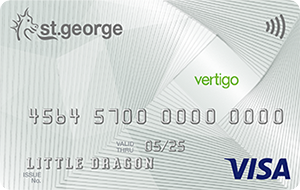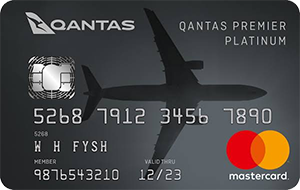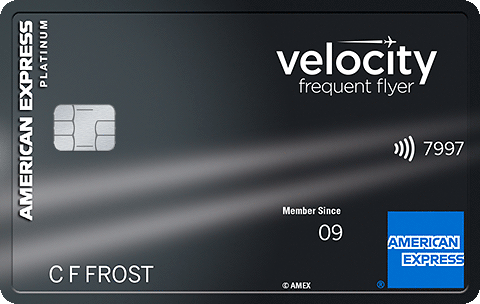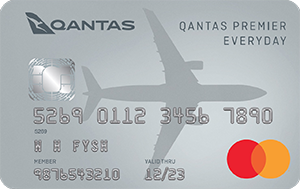
Hi, I’m a personal finance expert who loves to help you out! I’ll answer your question within a business day. Pinky swear.

With 2024 almost done and dusted, this could be a good time to take stock of how well you’re living up to those new year’s resolutions. If, like many, your resolutions have fallen by the wayside – who said dieting was a good idea anyway – you can at least use this time to take a closer look at your finances. Starting with your credit cards.
It’s been 4 years since COVID-19 turned the world upside down and changed everyday life. For many of us, the changes turned into something positive, like working from home and losing the long commute. Rising interest rates and cost of living increases have caused uncertainty for many Aussie families.
Aside from anything else, these changes have altered the way we spend, what we buy and whether we use payment platforms such as Buy now pay later (BNPL). The question we want you to ask is – has your change in circumstances changed the way you use your credit card? And if it has, is your card still offering the same value as it did when you applied?

Assessing Your Card
This is the time to explore any changes that have occurred over the past year that may have affected the way you use your credit card. Have your credit cards kept pace with the changes in your life? Or are they just weighing you down?
Has the way you use your credit card changed in the past year?
Perhaps you’re on a tighter budget, as you try to build an emergency fund you can fall back on. Maybe you’re not spending as much because you’re now earning less, or your mortgage is costing more. You might even be saving more, if you’re saving on commuting expenses, lunches and so on if you’re working from home.
On the other hand, your spending habits may have changed only with regard to what you are spending money on. You may have pulled back on travel, spending less on holidays and weekends away. If that’s the case, look at what you are spending your money on now. Hobbies at home? Streaming services? Uber eats?
How healthy is your rewards earn?
If your spending habits have changed, this may have affected your ability to earn rewards. Frequent flyer cards in particular tend to offer a higher rewards earn on travel spending. But, if you’re no longer spending as much on travel, your points balance won’t be increasing as quickly as it once was.
You may also find you’re not getting as much value back on the rewards you redeem. When redeeming points, the best way to get bang for your buck is to use them for travel, especially international travel and flight upgrades.
How is your balance looking?
Come January, it’s not uncommon for credit card balances to look a little bloated. But, if you find you are unable to pay off that balance – and you’re paying through the nose with a high interest rate – you may have to look at ways to pay down that debt.
On the other hand, your balance may have been creeping up long before Christmas. If you have been struggling to clear your balance each month, and have only been making the minimum repayments, this could be the time to face up to the issue. Again, a high interest card is not your friend, so it may be time to switch cards or perhaps, look for other ways to consolidate your debt.
Has your card changed in any way?
If you have a premium or rewards card, you may have noticed your card provider making some changes in its offering. It’s within the card’s terms and conditions for them to change the features at whim. Some will benefit you, and some won’t.
For instance, you may no longer have the option to convert points to a particular frequent flyer program, or your card may have pulled back on certain perks you once enjoyed. Other things to watch out for is interest-free days. Some credit providers have dropped from 55 days interest free down to only 44.
Are you making use of your card’s perks?
Premium cards often use perks to entice cardholders to sign up, and then encourage them to stay. However, those perks are typically focused on travel. Using your credit card previously, you may have enjoyed access to airport lounges, airport transfers and complimentary travel insurance. You may have been granted upgrades on flights or hotel stays, or perhaps you were provided with a certain amount of travel credit to use each year.
Sounds awesome, right? Yes, but only if you can actually make use of it all. Have a think about how much travel you genuinely undertake each year, and whether the airport lounges, travel insurance and status credits are worthwhile.
What Should Your Card Offer?
With a better understanding of what your card is currently offering you, you can now make the decision regarding whether you should keep it – or switch it for something more suitable. So, what should your card offer as we move ever onwards into 2023?
No.1. An Annual Fee That’s Worth Paying
Credit card annual fees can range from very little – zero, in some cases – to hundreds, or even thousands of dollars. You will usually find cards with lower annual fees are more basic in nature, while cards with much higher annual fees come with more extras. The higher the annual fee, the fancier the extras.
When choosing a credit card – or deciding whether to keep the card that’s currently in your wallet – weigh up the value of what’s on offer against the card’s annual fee. If you’re not able to use the card’s extras, then paying extra for them simply doesn’t make sense.
Look at the extras on offer and think about whether you will use them. Determine the value of those extras, and compare that to the annual fee you will pay out. On a rewards card, the rewards you earn can also add value. More on that later though.
Then it’s simply a matter of deciding whether the card’s annual fee is worth paying or not. If you’re not using certain extras, you could get more value from a basic card with a much lower annual fee. Choosing a card with no annual fee at all could save you even more.
| TIP: If you’re assessing a card you currently have, think about when your annual fee is due. If you’ve just paid your annual fee, you may be better off keeping the card to make use of whatever extras you can over the coming months. You can then reassess before your next annual fee is due, and close the account if it’s still not offering value. |
No. 2. Extras You Can Use
Back to those extras. While some extras may have lost their value to you as a cardholder, other perks may still be worth checking out.
Shopping Perks
Some credit cards provide cashback offers and other ways to save when shopping with partner retailers. To make use of these offers, you may need to sign up, or subscribe so that you receive regular updates.
American Express offers a good example of this type of extra with Amex Offers. Provided to cardholders with American Express issued cards, Amex Offers gives access to a range of offers that change over time, with some offers personalised to the cardholder. As a cardholder, you can find your available offers listed in your online account.
As an example, you may receive an offer allowing you to get cashback when you use your card to spend a certain amount with a certain retailer (such as Citi’s My Cashback program). Or, you may get a percentage discount, or earn bonus points on your spend. You may also benefit from complimentary memberships, and other offers that allow you to save when using your card.
Purchase Protection
Purchase protection covers are pretty common on credit cards these days. It is typically offered in the form of a price guarantee, purchase protection insurance and extended warranty. But, while it may not be one of the perks you have paid much attention to in the past, it could help you to get more value from your card – especially if you’re now indulging more in retail therapy.
Here’s how these covers generally work.
- With price guarantee, you get the difference back on an item purchased using your card if you find the same item at a lower price within a specific period of time. The money paid out on this is limited, and it will only be valid if the lower-priced item is available in a bricks and mortar store within a certain distance of the original purchase.
- With purchase protection insurance, eligible items purchased using the card are covered for loss or damage. That means if an item you purchase is lost, stolen or damaged – usually within a set period after purchase – you will receive a replacement, or potentially have the item fixed.
- With extended warranty, eligible items you buy using your card benefit from an extended warranty. This usually doubles the manufacturer’s warranty, up to a maximum of 12 months.
As with most types of cover offered on credit cards, these covers come with quite a lot of small print. To make use of them, take time to look over the PDS.
Mobile Phone Cover
If you’ve ever heard that crack as you drop your mobile phone, you know just how awful it feels to pick it back up and see the spider web creeping across the screen. Smashed screens are not cheap to fix, especially if you get it done properly. Going to Apple for example, you’d pay out $465 on an iPhone 14 screen replacement if your phone was out of warranty – or $615 for a ‘Pro Max’ model.
However, there are certain credit cards out there that offer Smartphone Screen Insurance. The American Express Essential Credit Card is one such card – and it has no annual fee. As long as you use the card to pay for the phone or the contract, you will be covered up to $500 per claim, on a maximum of two claims per year. If you have an expensive smartphone – and have been known to be somewhat clumsy – this cover could be well worth having.
Travel Cancellation Insurance
Many cards – mostly those in the premium or rewards space – offer travel insurance that gives you some cover for medical expenses, travel cancellation, travel inconvenience and domestic travel cover.
You will typically need to use your card to book the trip if you want to benefit from the cover on offer – and there may be some small print to wade through. It’s worth bearing in mind that some travel insurance providers do not cover pandemic related events or ‘known’ events, which may reduce the amount of cover you receive. You can see a list of credit card insurances that include COVID-19 cover here.
Rental Car Coverage
If you’re getting out and about within Australia, you may need to hire a car to explore your surroundings. Most car hire companies charge a huge excess as standard, encouraging you to pay $15-$20 more per day to reduce the excess in the event of an accident. If your card offers car rental cover, you could save yourself that cost – all you need to do is cover the hire costs with your card.

No. 3. Rewards That Reward You
As we mentioned earlier, assessing the value of a card means finding out what it can offer you – and weighing that against what you pay out in annual fees. If you have a rewards card, this weighing and balancing process is something you should do on a regular basis.
Over the past few years, card providers have pulled back on their rewards offering, making it harder for everyday cardholders to find value on their rewards. While big spenders enjoy big rewards, smaller spenders can find it difficult to break even, often paying out more in annual fees than they get back in rewards.
If you’ve found that a change in your spending habits has resulted in a lower points earn, it may be time to look at other options.
Attainable Rewards
This is the time to get to know your rewards program better. You may find that you can earn rewards in ways you didn’t realise. Take Qantas Frequent Flyer, for example. While the best way to earn rewards involves paying for travel with Qantas, you can earn heaps of Qantas Points on the side when you take advantage of promotions or shop with Qantas partners.
Obviously, you will need to find the right rewards program to suit your new style of spending. Check out the options – whether that means choosing a frequent flyer program such as Qantas or Velocity, or opting for a program that rewards supermarket spending, like flybuys – and really get to know your program so that you can make the most of it.
On the other hand, if you find that your card spend has reduced dramatically, you may find that a non-rewards earner would work better for now.
Cashback Rewards
Opting for a card offering cashback rewards could provide an alternative option if you find you’re no longer getting value on your traditional rewards program. Unlike traditional rewards, which can be overly complex and require intensive study to understand, cashback rewards simply provide cashback on card spending.
Unfortunately, the list of cards offering cashback rewards in Australia is pretty small. Unlike in the US, where there are loads of cards offering 2% unlimited cashback, Australian cashback cards are much more limited. You can see and compare cashback offers on credit cards here.
Flexible Redemptions
When it comes to rewards programs, the highest value redemptions come from travel, either in the form of flights or upgrades. Typically international flights and upgrades offer the best value, followed by domestic options. Redemptions on gift cards and items purchased via the program’s ‘store’, such as toasters and kitchen knives, come much lower on the scale.
If you’re unable to redeem your points for higher value travel rewards right now, find out how long your points will stay in your account before they expire – and keep them as long as you can. Some programs have a ‘soft’ points expiry, where points expire if you do not earn or redeem points within a certain period of time. Other programs have a ‘hard’ points expiry, where points are only held within an account for a given period of time before they expire.
| TIP: If your points are due to expire soon, it could be worth talking to your card provider or rewards provider to ask for an extension. Some providers are willing to be more lenient, given the changes the pandemic has created. |
No. 4. Minimal Interest Costs
If your financial situation has changed over the past year and you are now carrying a balance each month as a result, it could be time to look at other options. With a high interest credit card, your interest will be stacking up month after month, making it even harder to clear your debt. Switching to a low rate card via a balance transfer offer could be well worth looking into.
No. 5. An Awesome Intro Offer
Should you decide to switch to a card that suits you better, you could use the opportunity to take advantage of an introductory offer – and get even more out of the card you choose. Here are the four main types of intro offers and who they work best for.
- Bonus Points Offer: With this offer, you get a chunk of points after spending a certain amount on the card, usually within the first few months from card approval.
- As long as you can meet that minimum spend and pay it off before it starts attracting interest, this type of offer can provide a great boost to your balance.
- Remember to check how long you will have before your bonus points expire, as you may need to hold onto them until international travel opens up, when you can get the most value from them.
- 0% Purchase Offer: With this offer, you pay no interest on your purchases throughout the introductory period.
- A card with a long 0% purchase offer can be a great find for cardholders with a big purchase planned, allowing them to spread the cost and pay it all back, with nothing to pay in interest.
- Remember to make a budget before you start spending – and then make regular repayments to pay off your total spend before the introductory period ends.
- Annual Fee Offer: With this offer, you pay a reduced annual fee for the first year.
- This type of offer can work especially well on rewards cards and premium cards with perks, allowing you to try a card on for size, while paying a much lower annual fee.
- Remember, if you plan on keeping the card past the first year, make sure it still offers value while paying its standard annual fee.
- 0% Balance Transfer Offer: With this offer, you pay no interest on your transferred balance over the introductory period.
- If you’re thinking about switching cards, but have a balance you need to pay off, this type of offer can let you pay down your balance while paying nothing in interest.
- Remember, make regular repayments to clear your transferred balance within the intro period – and avoid spending unless you can pay it back in full each month.
Switching Cards: A Checklist
Having taken stock of your options – looking at both your current cards, as well as those you might want to apply for – you should now know what each card has to offer. Before you decide whether switching cards is the right option for you, however, take a look at this checklist to make sure you have covered all your bases.
✓ When did you pay your annual fee? If you have already paid your annual fee for the year, you could put off cancelling the card for now, to take advantage of all the perks you have already paid for. Set a reminder to reassess your card before the next annual fee is due.
✓ What happens to your points? When you cancel your card, you may lose all those carefully accumulated points. Staying within the same rewards family could allow you to retain your balance, or you might have to look at redeeming your points so you get something back on them. Converting your points to another program may offer another alternative.
✓ How good is your credit? Before you apply for another card, check your credit. If your credit score has taken a hit recently, you may find it harder to get approved. The same may apply if your financial circumstances have changed, your income has decreased, or you have changed jobs.

Pauline Hatch
Pauline is a personal finance expert at CreditCard.com.au, with 9 years in money, budgeting and property reporting under her belt. Pauline is passionate about seeing Aussies win by making their money – and their credit cards – work smarter, harder and bigger.
You might be interested in

Credit Card Types
Credit Card Fraud Statistics

Tips & Guides
Complete Guide to the Velocity Frequent Flyer Program
Recently Asked Questions
Something you need to know about this card? Ask our credit card expert a question.
Ask a question
Hi, I’m a personal finance expert who loves to help you out! I’ll answer your question within a business day. Pinky swear.













